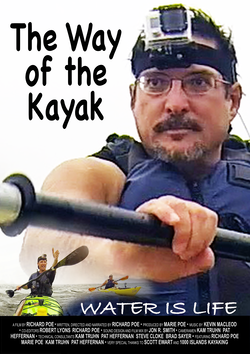INTERVIEW: Who Came Before Columbus?
|
by admin Monday, February 5, 2001 12:00 am Eastern Time |
Archives Comments |
Who Came Before Columbus?
by Hisham Aidi
February 5, 2001
ACCORDING TO Malian historian and playwright Gaoussou Diawara, Africans may have “discovered” America nearly two centuries before Christopher Columbus’s famous landing. In his forthcoming book, The Saga of Abubakari II…He Left with 2000 Boats, Diawara describes an African monarch who abdicated his throne in 1311 and set off to discover whether the Atlantic Ocean, like the vast River Niger, “had another bank.”
Diawara contends that in 1312 Abubakari II, who ruled over a vast West African empire including modern-day Mali, landed in Recife, on the coast of Brazil. The scholar, who heads a research project dedicated to exploring the history and heritage of Abubakari II, marshals considerable archaeological and linguistic evidence demonstrating the African presence in pre-Columbian America.
He’s not the first to do so. The thesis of an early African presence in the Americas was prominently advanced by Guyana-born anthropologist Ivan Van Sertima in his 1977 book, They Came Before Columbus. Van Sertima argues that Africans reached the Americas in two stages. The first wave, ancient Egyptians and Nubians, reached the Gulf of Mexico around 1200 BCE and 800 BCE, respectively, bringing with them writing and pyramid-building. Centuries later, around 1310 CE, the Mande people of West Africa went to Mexico, Panama, Ecuador, Colombia, Peru and various Caribbean islands, according to Van Sertima. The Olmec stone heads of Mexico, which have astonishingly African features, are among the archaeological and linguistic evidence Van Sertima presents.
Van Sertima describes how, according to Columbus’s own writings, the people living on the island of Hispaniola (later Haiti and the Dominican Republic) told him that “black-skinned people had come from the south and southeast trading in gold-tipped metal spears. Columbus sent samples of these spears back to Spain to be tested, and they were found to be identical in their proportions of gold, silver and copper alloys to spears then being forged in African Guinea. Columbus’ son, Ferdinand, said his father told him that he had seen black people north of what is now Honduras.”
The evidence, Van Sertima concludes, “argues overwhelmingly against a mere coincidence.” Indeed, the idea that Columbus was not the first person from across the ocean to “discover” the Americas is commonplace, and shared by the Society of American Archaeology, which declared in 1968 that “there cannot be now any question, but that there were visitors to the New World from the Old in historic or even prehistoric time before 1492.”
But did they come from Africa?
Unlike theories that Viking explorers from Northern Europe arrived on the North American continent hundreds of years before Columbus – theories that are debated but generally treated with cautious respect – Van Sertima’s assertions drew angry fire from those who disagreed.
A New York Times reviewer dismissed Van Sertima as a “deluded scholar” writing “ignorant rubbish” with “abysmal” historical and research methods. Students of Meso-America have also strongly disputed Van Sertima’s characterization of the Olmec people as African. David Grove, an expert on Olmec civilization, notes that Van Sertima’s claims about the Olmecs’ blackness are suspect because “the Olmecs did not have a selection of skin tones to choose from in making their monuments. The only stone available to them was black stone. The source of the stone is the Tuxlas Mountains, of volcanic origin.” A particularly caustic critique, titled “Van Sertima’s Afrocentricity and the Olmecs,” even scoffed that “native Americans would have sacrificed and eaten the Africans if they came.”
Such attacks don’t surprise Richard Poe, the author of Black Spark, White Fire: Did African Explorers Civilize Ancient Europe?, which addresses the possibility of Africans taking transatlantic trips before Columbus.
“Ivan Van Sertima is a courageous and brilliant scholar, who has done ground-breaking work,” says Poe. “His findings have never received the fair hearing that they deserve. Rather than refuting his arguments, Van Sertima’s critics habitually resort to mean-spirited, personal attacks. The anger and indignation his theories provoke seems to go beyond mere scholarly disagreement.”
Such fierceness, Poe says, has a lot to do with race — black scholars generally embraced Van Sertima’s work. “Consciously or unconsciously, some of Van Sertima’s critics may still be clinging to the 19th-century notion that seafaring is a European monopoly,” he says. “Seafaring is the quintessential European achievement, the single endeavor of which we are most proud. It was seafaring that enabled Europe to conquer the world. White people have a deep sense of themselves as explorers. The idea that black Africans might have beaten us to the New World threatens our sense of ownership over the seas. Maybe it’s a bit like the way some black people dislike hearing white musicians do rap. A hundred years ago, it was common for scholars to claim that peoples of so-called ‘Aryan’ or Nordic race possessed a peculiar combination of courage and wanderlust that made them natural sailors. Non-Aryans were viewed as poor sailors, even when the evidence proved otherwise — as in the case of the Egyptians, who are known to have made long sea voyages to Somalia, Crete, Greece and probably beyond.”
The evidence, Diawara argues, can still be found in Africa. Both Van Sertima and Diawara say that Mali’s griots (oral historians) tell of the African king who sent an expedition to the “Western Ocean.” His voyage is mentioned not only in the griots’ narratives, but also in Arabic texts, including a 14th century Egyptian book by the historian al-Omari.
In an interview with the BBC, Tiemoko Konate, one of the researchers working with Diawara, offered other evidence of Abubakari’s landing in Recife, Brazil: “Its [Recife’s] other name is Purnanbuco, which we believe is an aberration of the Mande name for the rich gold fields that accounted for much of the wealth of the Mali Empire, Boure Bambouk.” Konate also cites tests, similar to those Van Sertima described, showing that the gold tips of spears found by Columbus in the Americas may be made of originally West African gold.
In an interview with Emerge magazine, Van Sertima argued that the Atlantic’s currents serve as natural marine conveyer belts: “Once you enter them, you are transported (even against your will, even with no navigational skill) from one bank of the ocean to the other,” he said. “Thor Heyerdahl crossed the Atlantic in 1969 in a papyrus boat like those built by Africans before the time of Christ. Hannes Lindemann crossed the Atlantic in an African dugout in 12 days less than it took Amerigo Vespucci or Columbus to cross. Three currents can carry Africans to the Americas: off the Cape Verde islands, off the Senegambia coast, and off the southern coast of Africa. It is at the end of these currents that we have found Africans in America before Columbus.”
Interestingly, Diawara thinks that the story of Abubakari II, who apparently never returned to Africa, has important lessons to offer Africans today – particularly African leaders in the states that used to constitute the ancient Malian empire. “Look at what’s going on in all the remnants of that empire, in Ivory Coast, Sierra Leone, Liberia, Guinea,” Diawara said in a BBC interview. “Politicians are bathing their countries in blood, setting them on fire just so that they can cling to power. They should take an example from Abubakari II. He was a far more powerful man than any of them. And he was willing to give it all up in the name of science and discovery. That should be a lesson for everyone in Africa today.”
Hisham Aidi is a writer living in New York
Posted to RichardPoe.com September 11, 2006 18:56 ET
Cross-posted from Africana.com 02.05.01







